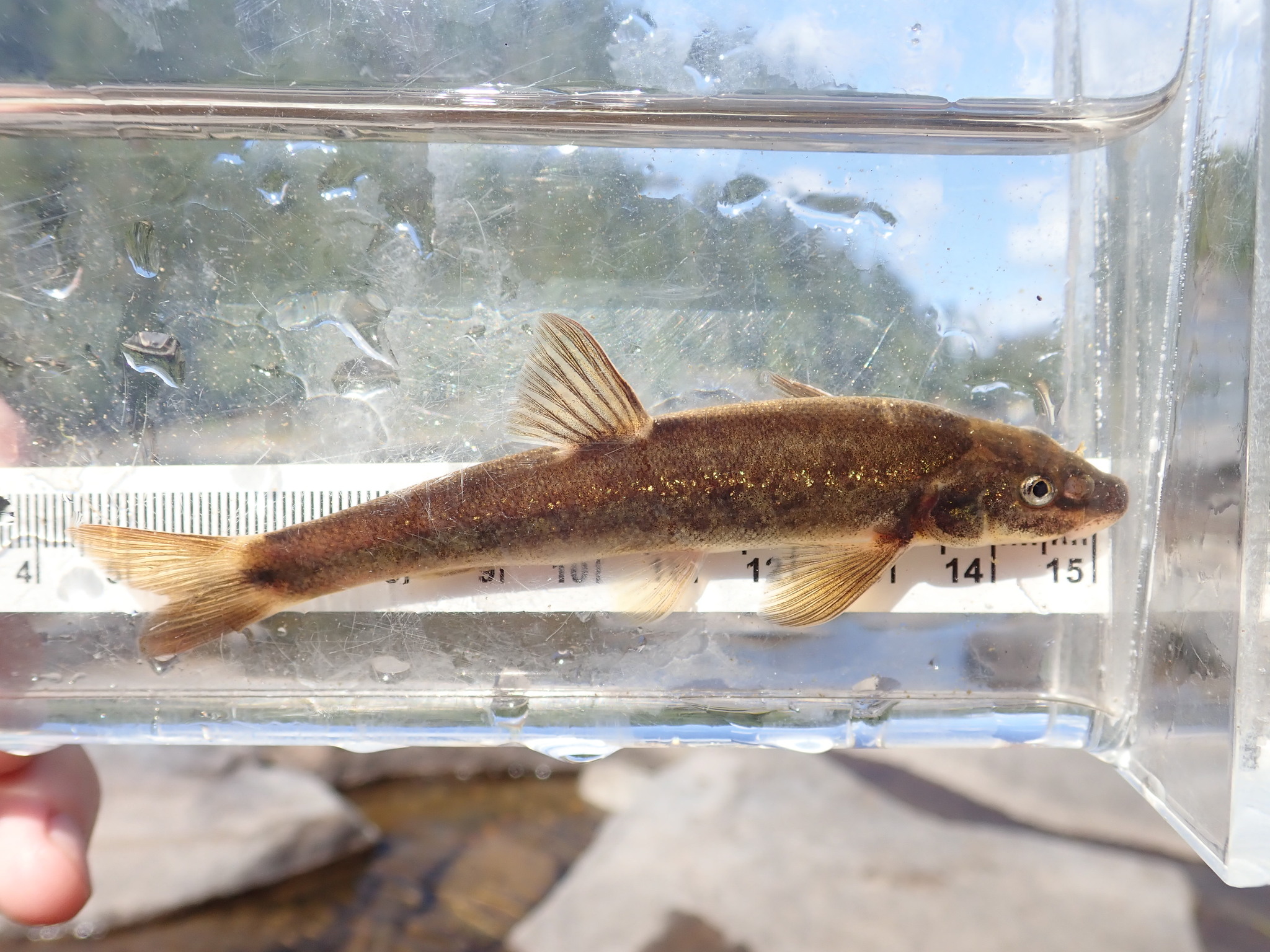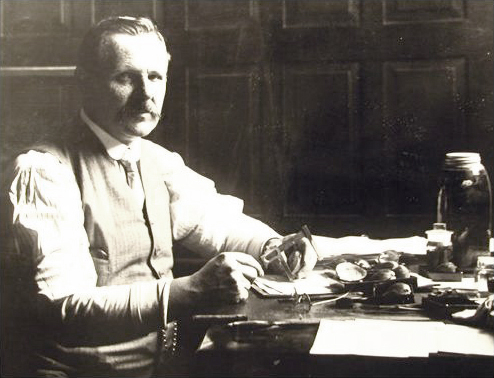|
Alasmidonta Varicosa
The brook floater or swollen wedgemussel, ''Alasmidonta varicosa'', is a species of freshwater mussel, an aquatic bivalve mollusk in the family Unionidae, the river mussels. It measures 25.1 mm to 80.2 mm in length although other research also suggests it rarely exceeds three inches (75 mm). Distribution This species is found in Canada (New Brunswick and Nova Scotia) and northeastern United States (Connecticut, Georgia, Maine, Maryland, Massachusetts, New Hampshire, New Jersey, New York, North Carolina, Pennsylvania, South Carolina, Vermont, Virginia and West Virginia); It was formerly found in Rhode Island and four watersheds in Massachusetts but are now extinct in Rhode Island and almost extinct in Massachusetts. 1897 Research by Arnold Edward Ortmann showed it to be common in the Delaware and Susquehanna Rivers. Habitat and behavior This mussel lives in high relief streams, under boulders and in sand. Research has shown that it is highly sensitive to increa ... [...More Info...] [...Related Items...] OR: [Wikipedia] [Google] [Baidu] |
Jean-Baptiste Lamarck
Jean-Baptiste Pierre Antoine de Monet, chevalier de Lamarck (1 August 1744 – 18 December 1829), often known simply as Lamarck (; ), was a French naturalist, biologist, academic, and soldier. He was an early proponent of the idea that biological evolution occurred and proceeded in accordance with Naturalism (philosophy), natural laws. Lamarck fought in the Seven Years' War against Prussia, and was awarded a commission for bravery on the battlefield. Posted to Monaco, Lamarck became interested in natural history and resolved to study medicine.#Packard, Packard (1901), p. 15. He retired from the army after being injured in 1766, and returned to his medical studies. Lamarck developed a particular interest in botany, and later, after he published the three-volume work ''Flore françoise'' (1778), he gained membership of the French Academy of Sciences in 1779. Lamarck became involved in the Jardin des Plantes and was appointed to the Chair of Botany in 1788. When the French Nationa ... [...More Info...] [...Related Items...] OR: [Wikipedia] [Google] [Baidu] |
Pennsylvania
Pennsylvania, officially the Commonwealth of Pennsylvania, is a U.S. state, state spanning the Mid-Atlantic (United States), Mid-Atlantic, Northeastern United States, Northeastern, Appalachian, and Great Lakes region, Great Lakes regions of the United States. It borders Delaware to its southeast, Maryland to its south, West Virginia to its southwest, Ohio and the Ohio River to its west, Lake Erie and New York (state), New York to its north, the Delaware River and New Jersey to its east, and the Provinces and territories of Canada, Canadian province of Ontario to its northwest via Lake Erie. Pennsylvania's most populous city is Philadelphia. Pennsylvania was founded in 1681 through a royal land grant to William Penn, the son of William Penn (Royal Navy officer), the state's namesake. Before that, between 1638 and 1655, a southeast portion of the state was part of New Sweden, a Swedish Empire, Swedish colony. Established as a haven for religious and political tolerance, the B ... [...More Info...] [...Related Items...] OR: [Wikipedia] [Google] [Baidu] |
Slimy Sculpin
The slimy sculpin (''Cottus cognatus'') is a freshwater species of fish belonging to the family Cottidae, which is the largest sculpin family. They usually inhabit cold rocky streams or lakes across North America, ranging from the Great Lakes, southeast Minnesota, northeast Iowa, southwest Wisconsin and northeast Canada. Slimy sculpins have also been found roaming the cold streams of eastern Siberia. They are commonly confused with their closely related relatives, Mottled sculpin (''Cottus bairdi''), and with tubenose goby, tubenose gobies who are both freshwater fishes as well. The slimy sculpin is a nocturnal fish that usually spends most of its time on the stream bottom and seeks shelter under rocks and logs, especially during spawning season. When it swims, it sometimes appears to be "hopping" along the bottom because of its inefficient ability to swim. This is partly due to the absence of a swim bladder, which normally gives buoyancy to a fish. The fish has been studied in ... [...More Info...] [...Related Items...] OR: [Wikipedia] [Google] [Baidu] |
Pumpkinseed
The pumpkinseed (''Lepomis gibbosus''), also referred to as sun perch, pond perch, common sunfish, punkie, sunfish, sunny, and kivver, is a small to medium–sized freshwater fish of the genus ''Lepomis'' (true sunfishes), from the sunfish family (biology), family (Centrarchidae) in the order (biology), order Centrarchiformes. It is endemism, endemic to eastern North America. Etymology ''Lepomis'', in Greek, means 'scaled gill cover' and ''wikt:gibbosus, gibbosus'' means 'humped'. The defining characteristic of a pumpkinseed sunfish is the bright red spot at the tip of the ear flap. The pumpkinseed sunfish is widely recognized by its shape of a pumpkin seed, from which its common name comes. See also Wiktionary link below. Description Pumpkinseeds have a body shaped much like a pumpkin seed (thus the common name), typically about but up to in length. They typically weigh less than , with the world record being caught by Robert Warne while fishing Honeoye Lake, Upstate New ... [...More Info...] [...Related Items...] OR: [Wikipedia] [Google] [Baidu] |
Golden Shiner
The golden shiner (''Notemigonus crysoleucas'') is a species of freshwater ray-finned fish belonging to the family Leuciscidae. This fish occurs in Eastern North America. It is the sole member of its genus. Commonly used as a bait fish, it is probably the most widely pond-cultured fish in the United States. It can be found in Quebec, and its French name is "Mené jaune" or "Chatte de l'Est". Taxonomy It is the only North American member of the subfamily Leuciscinae, within which it occupies a relatively basal position, though still rather derived. All other members of this subfamily are found in Eurasia. Fossil remains of ''Notemigonus'' sp. have been recovered from the Late Miocene-aged Montbrook fossil site of Florida, US. Description Though it has been known to reach lengths of , in the wild the golden shiner is usually between long. The body is laterally compressed (deep-bodied). The back is dark green or olive, and the belly is a silvery white. The sides are silver ... [...More Info...] [...Related Items...] OR: [Wikipedia] [Google] [Baidu] |
Eastern Blacknose Dace
Eastern blacknose dace (''Rhinichthys atratulus'') is a species of ray-finned fish in the genus '' Rhinichthys''. Its name originates from the Old French word "dars" which is the nominative form of the word "dart" in reference to their swimming pattern. The western blacknose dace (''Rhinichthys obtusus'') formerly was considered conspecific. While morphologically the two species are not significantly different, they are allopatric. The eastern blacknose dace is found across the southeast portion of Canada and down along the United States' east coast. It is dark brown to olive on its dorsal surface and silvery white below, the two shades separated by the darkly pigmented lateral line. In the breeding season, males develop darker pigmentation and an orange lateral line. Blacknose dace live in rocky streams and rivers where they feed upon small invertebrates and microscopic biological matter and provide forage for larger fish. Physical description As fry, this fish is long, and s ... [...More Info...] [...Related Items...] OR: [Wikipedia] [Google] [Baidu] |
Longnose Dace
The longnose dace (''Rhinichthys cataractae'') is a freshwater minnow native to North America. ''Rhinicthys'' means snout fish (reference to the long snout) and ''cataractae'' means of the Waterfall, cataract (first taken from Niagara Falls). Longnose dace are small, typically less than 100 mm and characterized by their fleshy snout that protrudes past the mouth. They are well adapted for living on the bottom of fast-flowing streams among stones. Longnose dace eat algae and aquatic insects and are important forage minnows for larger predatory fish. Description Longnose dace can be mistaken for Catostomidae, suckers because of their subterminal "sucker-like" mouth. However, longnose dace (like all members of the family Cyprinidae) lack small fleshy projections, called papillae, on their mouths. Juveniles have a black lateral line that extends from the beginning of the eye to the caudal fin that fades as the fish matures. The lateral line in juveniles is not present in all p ... [...More Info...] [...Related Items...] OR: [Wikipedia] [Google] [Baidu] |
Susquehanna River
The Susquehanna River ( ; Unami language, Lenape: ) is a major river located in the Mid-Atlantic (United States), Mid-Atlantic region of the United States, crossing three lower Northeastern United States, Northeast states (New York, Pennsylvania and Maryland). At long, it is the longest river on the East Coast of the United States. By Drainage basin, watershed area, it is the 16th-largest river in the United States,Susquehanna River Trail Pennsylvania Fish and Boat Commission, accessed March 25, 2010.Susquehanna River , Green Works Radio, accessed March 25, 2010. and also the longest river in the early 21st-century continental United State ... [...More Info...] [...Related Items...] OR: [Wikipedia] [Google] [Baidu] |
Delaware River
The Delaware River is a major river in the Mid-Atlantic region of the United States and is the longest free-flowing (undammed) river in the Eastern United States. From the meeting of its branches in Hancock, New York, the river flows for along the borders of New York, Pennsylvania, New Jersey, and Delaware, before emptying into Delaware Bay. The river has been recognized by the National Wildlife Federation as one of the country's Great Waters and has been called the "Lifeblood of the Northeast" by American Rivers. Its watershed drains an area of and provides drinking water for 17 million people, including half of New York City via the Delaware Aqueduct. The Delaware River has two branches that rise in the Catskill Mountains of New York: the West Branch at Mount Jefferson in Jefferson, Schoharie County, and the East Branch at Grand Gorge, Delaware County. The branches merge to form the main Delaware River at Hancock, New York. Flowing south, the river re ... [...More Info...] [...Related Items...] OR: [Wikipedia] [Google] [Baidu] |
Arnold Edward Ortmann
Arnold Edward Ortmann (April 8, 1863 – January 3, 1927) was a Prussian-born United States naturalist and zoologist who specialized in malacology. Biography Ortmann was born in Magdeburg, Prussia on April 8, 1863. A student of Ernst Haeckel, he graduated from the University of Jena in 1885 with a Ph.D.; he had also studied at the University of Kiel and the University of Strasbourg. From 1886 on, he worked as an instructor at the University of Strasbourg. Together with Haeckel, he participated in an expedition to Zanzibar in 1890/91. Three years later, he emigrated to the United States, where he got a post as the curator of the department of invertebrate paleontology at Princeton University. He was elected to the American Philosophical Society in 1897. In 1899, he participated in the Peary Relief expedition, and one year later, he was naturalized as a U.S. citizen. In 1903, he moved to Pittsburgh. He became the curator of invertebrate zoology at the Carnegie Museum and from 191 ... [...More Info...] [...Related Items...] OR: [Wikipedia] [Google] [Baidu] |
Rhode Island
Rhode Island ( ) is a state in the New England region of the Northeastern United States. It borders Connecticut to its west; Massachusetts to its north and east; and the Atlantic Ocean to its south via Rhode Island Sound and Block Island Sound; and shares a small maritime border with New York, east of Long Island. Rhode Island is the smallest U.S. state by area and the seventh-least populous, with slightly more than 1.1 million residents . The state's population, however, has continually recorded growth in every decennial census since 1790, and it is the second-most densely populated state after New Jersey. The state takes its name from the eponymous island, though most of its land area is on the mainland. Providence is its capital and most populous city. Native Americans lived around Narragansett Bay before English settlers began arriving in the early 17th century. Rhode Island was unique among the Thirteen British Colonies in having been founded by ... [...More Info...] [...Related Items...] OR: [Wikipedia] [Google] [Baidu] |
West Virginia
West Virginia is a mountainous U.S. state, state in the Southern United States, Southern and Mid-Atlantic (United States), Mid-Atlantic regions of the United States.The United States Census Bureau, Census Bureau and the Association of American Geographers classify West Virginia as part of the Southern United States while the Bureau of Labor Statistics classifies the state as a part of the Mid-Atlantic (United States), Mid-Atlantic regionMid-Atlantic Home : Mid-Atlantic Information Office: U.S. Bureau of Labor Statistics" www.bls.gov. Archived. It is bordered by Pennsylvania and Maryland to the northeast, Virginia to the southeast, Kentucky to the southwest, and Ohio to the northwest. West Virginia is the List of U.S. states and territories by area, 10th-smallest state by area and ranks as the List of U.S. states and territories by population, 12th-least populous state, with a population of 1,769,979 residents. The capital and List of municipalities in West Virginia, most populou ... [...More Info...] [...Related Items...] OR: [Wikipedia] [Google] [Baidu] |








